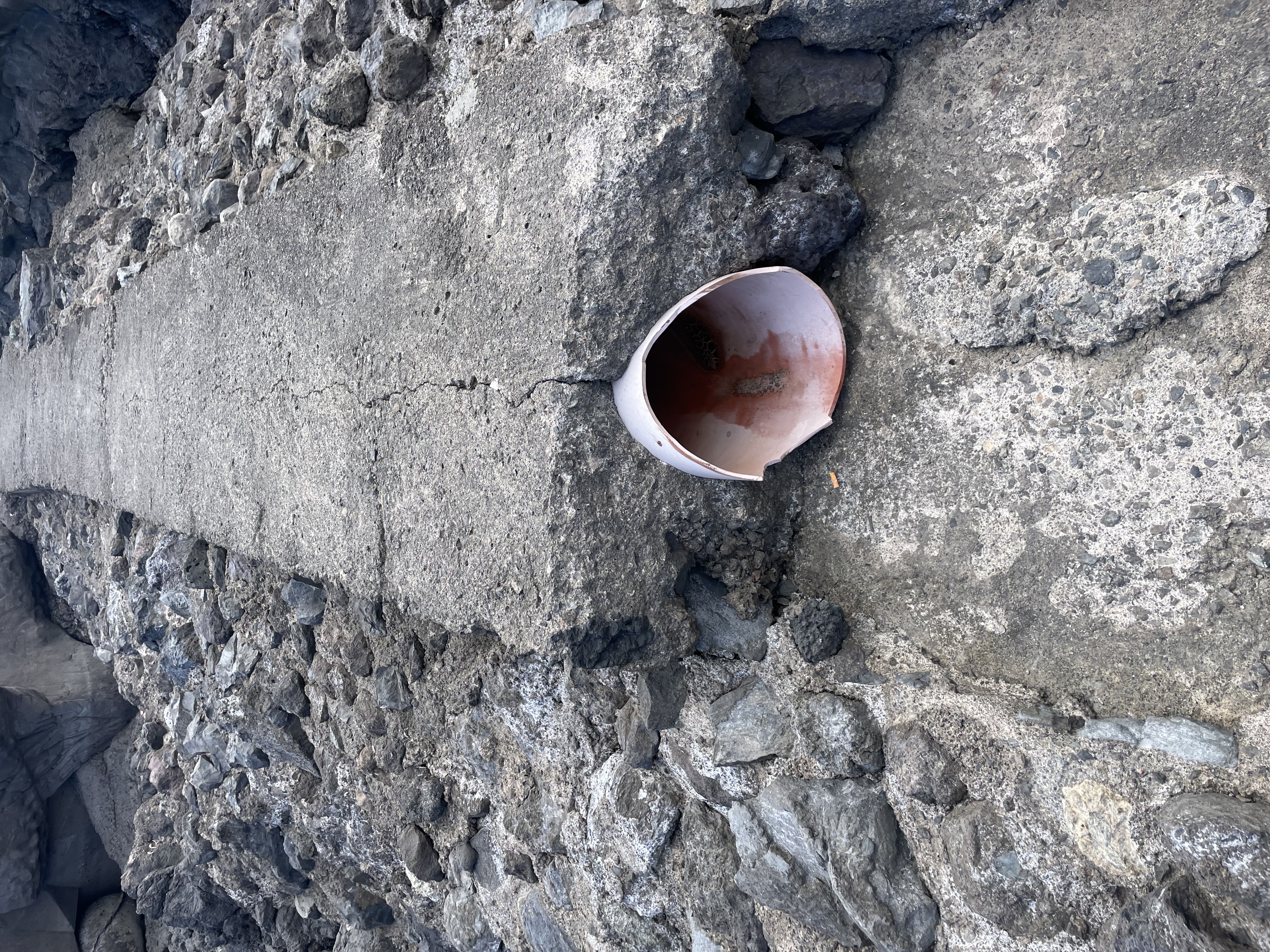Summary
The image shows a broken fragment of what appears to be a cement pipe, a product category that frequently contains asbestos. Based on its form and material type, there is a high probability that it is asbestos-cement, even though fibers are not visible in the photo. It is strongly recommended to presume the material contains asbestos and have it handled only by professionals, with laboratory analysis required for confirmation.
Object description
The image displays a broken, curved section of what appears to be a pipe or conduit, resting on a concrete and rock surface. The material is gray, appears rigid, and has a fine-grained, homogeneous texture consistent with a cementitious product. The inner surface has a reddish-brown coloration, which may be due to staining or the residue of its former contents. The edges of the break are sharp and irregular.
Object location
Coordinates:
28°22'31.39"N, 16°45'52.36"W
City/Country: Garachico, España
Full Address: El Caletón, Avenida República de Venezuela, Los Reyes, San Pedro de Daute, Garachico, Santa Cruz de Tenerife, Canarias, 38450, España
Asbestos Assessment
The object strongly resembles a fragment of an asbestos-cement (AC) pipe. Products of this type were widely used for water distribution, drainage, and as electrical conduits. The visual characteristics—such as the gray color, fine-grained cement matrix, thickness, and brittle fracture pattern—are all consistent with those of asbestos-cement materials. Although individual asbestos fibers or fiber bundles are not discernible at the resolution of the photograph, the product category itself is a very strong indicator. Historically, asbestos was a common additive in cement pipes to provide reinforcement and tensile strength. Many such pipes contain significant amounts of asbestos, often chrysotile but sometimes amphibole types as well. Given the high probability of asbestos in cement pipes of this appearance, particularly if their age is unknown or they predate the widespread ban on asbestos products, the material must be considered highly suspect. The lack of visible fibers does not rule out the presence of asbestos, as they are often tightly bound within the cement matrix unless the material is severely degraded or freshly broken.
Recommended action
This material should be presumed to contain asbestos. It is critical to avoid disturbing it further. Do not attempt to break, cut, drill, or abrade the fragment, as these actions can release dangerous asbestos fibers into the air. If the material needs to be moved or disposed of, this work must be performed by a qualified and licensed asbestos abatement professional who will follow strict safety and containment protocols. For a definitive identification, a sample should be carefully taken by a certified professional and submitted to an accredited laboratory for analysis.
Attachments
Share report
Direct Link: https://my.asbestos.help/r/4e220077-2c94-4578-8ff2-3f1c3c3861b6
Quick Code: NXYMR (https://my.asbestos.help/c/NXYMR)

